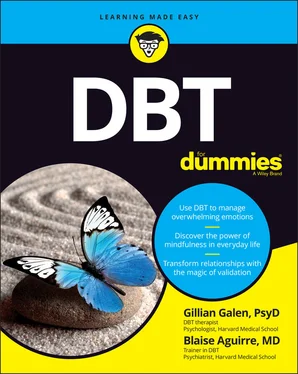1 ...7 8 9 11 12 13 ...23  An analogy would be to consider that a person has just learned how to swim. They get into a shallow pool and paddle around just fine. If they are then taken to a stormy ocean with big waves and thrown in, they have great difficulty managing the situation. Given that they are a beginning swimmer, it’s the best that they can do. However, our swimmer must learn how to manage more difficult swimming conditions if they ever want to leave the shallow pool, and the way to do this is by learning the skills necessary to become a better swimmer.
An analogy would be to consider that a person has just learned how to swim. They get into a shallow pool and paddle around just fine. If they are then taken to a stormy ocean with big waves and thrown in, they have great difficulty managing the situation. Given that they are a beginning swimmer, it’s the best that they can do. However, our swimmer must learn how to manage more difficult swimming conditions if they ever want to leave the shallow pool, and the way to do this is by learning the skills necessary to become a better swimmer.
 For the emotionally flooded patient, their behavior at the moment of heightened emotion may be the best that they can do, and yet it’s also the case that they must do better if they want to live a life with less suffering. The way to do “better” is by learning new ways of coping when strong emotions threaten to overwhelm the mind. And so, the seeming contradiction that a person is doing the best they can and that they can do better coexist, and the synthesis is that the learning of new skills makes the person more capable of managing more complicated situations, whether intense emotions or swimming conditions. This is the nature of dialectics.
For the emotionally flooded patient, their behavior at the moment of heightened emotion may be the best that they can do, and yet it’s also the case that they must do better if they want to live a life with less suffering. The way to do “better” is by learning new ways of coping when strong emotions threaten to overwhelm the mind. And so, the seeming contradiction that a person is doing the best they can and that they can do better coexist, and the synthesis is that the learning of new skills makes the person more capable of managing more complicated situations, whether intense emotions or swimming conditions. This is the nature of dialectics.
Chapter 3
Accepting Multiple Points of View
IN THIS CHAPTER
 Asking questions about your initial reactions
Asking questions about your initial reactions
 Widening your perception of other people
Widening your perception of other people
 Finding compassion for yourself as you look at others
Finding compassion for yourself as you look at others
Seeing multiple points of view isn’t always easy, and for some it can, at times, feel nearly impossible. At the foundation of DBT is the concept of dialectics, the idea that two opposing viewpoints can be true at the same time (see Chapter 2for details) — that is, we can hold multiple points of view or truths. For example, in DBT we wouldn’t necessarily say that the opposite of the truth is always a lie; we would say that the opposite of the truth can be another truth. When you think about it that way, you can begin to open your mind to other points of view, even when you feel very strongly about something.
While people’s thinking can be more or less flexible, one of the things that most strongly gets in the way of seeing another point of view is our own emotions. We know that the more emotional we get, the narrower our thinking becomes. When your thinking narrows, seeing perspectives other than the one you feel most passionate or certain about becomes hard. It can be as if you have tunnel vision.
If you’re someone who feels emotions strongly and intensely, this may be a familiar struggle. Sticking too strongly to your own perspective means you can miss important information, damage relationships, and be less effective at getting what you want or being heard.
In this chapter, you discover how to pay attention and evaluate your first reaction, broaden your awareness to other points of view, and find compassion for yourself as you begin this process.
Questioning Your First Reaction
 Our first reaction doesn’t always come from a wise place; instead, it can be powerfully driven by emotions. In DBT, we say that these reactions come from your emotion mind. When you’re in this state of mind, you see the world and react to it based solely on how you feel in the moment, with little consideration about the facts of the situation. When first reactions are problematic, they are driven too much by how we feel and lead to an equally problematic sense of certainty that we are right or that there is only one possible option or perspective. We can forget that there may be other possibilities, and our thinking can become rigid. Along with this chapter, the mindfulness skills discussed in Chapter 9will help you become more aware of strong emotions, learn to step back, and more purposely (instead of reactively) move forward with broader awareness and curiosity.
Our first reaction doesn’t always come from a wise place; instead, it can be powerfully driven by emotions. In DBT, we say that these reactions come from your emotion mind. When you’re in this state of mind, you see the world and react to it based solely on how you feel in the moment, with little consideration about the facts of the situation. When first reactions are problematic, they are driven too much by how we feel and lead to an equally problematic sense of certainty that we are right or that there is only one possible option or perspective. We can forget that there may be other possibilities, and our thinking can become rigid. Along with this chapter, the mindfulness skills discussed in Chapter 9will help you become more aware of strong emotions, learn to step back, and more purposely (instead of reactively) move forward with broader awareness and curiosity.
Questioning your first reaction is a challenging and wonderful practice. When you do so, you’re more able to act with an open mind and in a way that is consistent with your values. The following sections discuss some important aspects of questioning your first reaction to a situation: realizing that it may be exaggerated, matching it to what’s in front of you, and stopping yourself from taking action.
 It’s important to note that when you feel absolutely certain about something, you may be missing important information. That can be a helpful cue that you should consider other points of view.
It’s important to note that when you feel absolutely certain about something, you may be missing important information. That can be a helpful cue that you should consider other points of view.
Realizing your first reaction may be exaggerated
When you feel passionately about something, it’s easy to react strongly when you feel misunderstood or when someone disagrees with you. If you’re an emotionally sensitive person, you may have been told that you have big reactions to things. It’s important to understand that sometimes reactions — the ones that happen quickly — are exaggerated or too big. This is simply something to know about yourself. That knowledge will help you assess when you feel like your reaction fits the situation, or when it may be driven too much by your emotions. Again, the more you practice mindfulness (see Chapter 9), the easier this practice will become.
People are often judged by others for having exaggerated or larger emotional reactions to things, and this can be very painful. That being said, it’s important to realize that at times our reactions are too big and that this can be due to a range of things, including our own sensitivity to vulnerabilities such as being sick, feeling stressed at work or school, having financial stressors, dealing with relationship problems, being hungry, or simply not getting enough sleep.
The first step to opening your mind to multiple points of view is to accept, with compassion, that your initial reaction may in fact be exaggerated, too big, or too rigid and certain. This involves knowing that this reaction is a problem and wanting to change it. It can be helpful to remember that you are not letting go of your position or belief, but instead, holding onto it while also being open to other information or hearing other perspectives. That is dialectical thinking.
Matching your reaction to what is in front of you
When you’re in the moment, before you can expand your awareness, you must regulate whatever strong emotion is coming up. Emotions like fear, anger, shame, jealousy, and envy can be particularly challenging to work with. Sometimes you’ll need to use another approach, such as employing DBT distress tolerance skills (see Chapter 11), to decrease the intensity of how you feel, and then it will be much easier to open your mind to new or other information.
 If you’re an emotionally sensitive person, sometimes trying to match your level of emotion to the situation in front of you can be hard. This makes a lot of sense, because emotionally sensitive people tend to feel things longer and more deeply than the average person. Here are some skills you can work on:
If you’re an emotionally sensitive person, sometimes trying to match your level of emotion to the situation in front of you can be hard. This makes a lot of sense, because emotionally sensitive people tend to feel things longer and more deeply than the average person. Here are some skills you can work on:
Читать дальше

 An analogy would be to consider that a person has just learned how to swim. They get into a shallow pool and paddle around just fine. If they are then taken to a stormy ocean with big waves and thrown in, they have great difficulty managing the situation. Given that they are a beginning swimmer, it’s the best that they can do. However, our swimmer must learn how to manage more difficult swimming conditions if they ever want to leave the shallow pool, and the way to do this is by learning the skills necessary to become a better swimmer.
An analogy would be to consider that a person has just learned how to swim. They get into a shallow pool and paddle around just fine. If they are then taken to a stormy ocean with big waves and thrown in, they have great difficulty managing the situation. Given that they are a beginning swimmer, it’s the best that they can do. However, our swimmer must learn how to manage more difficult swimming conditions if they ever want to leave the shallow pool, and the way to do this is by learning the skills necessary to become a better swimmer. For the emotionally flooded patient, their behavior at the moment of heightened emotion may be the best that they can do, and yet it’s also the case that they must do better if they want to live a life with less suffering. The way to do “better” is by learning new ways of coping when strong emotions threaten to overwhelm the mind. And so, the seeming contradiction that a person is doing the best they can and that they can do better coexist, and the synthesis is that the learning of new skills makes the person more capable of managing more complicated situations, whether intense emotions or swimming conditions. This is the nature of dialectics.
For the emotionally flooded patient, their behavior at the moment of heightened emotion may be the best that they can do, and yet it’s also the case that they must do better if they want to live a life with less suffering. The way to do “better” is by learning new ways of coping when strong emotions threaten to overwhelm the mind. And so, the seeming contradiction that a person is doing the best they can and that they can do better coexist, and the synthesis is that the learning of new skills makes the person more capable of managing more complicated situations, whether intense emotions or swimming conditions. This is the nature of dialectics. Asking questions about your initial reactions
Asking questions about your initial reactions










